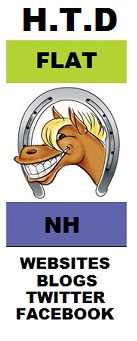We have been waiting for this moment ❤️
— Ascot Racecourse (@Ascot) June 15, 2021
Welcome back to #RoyalAscot, it’s been too long! pic.twitter.com/vfV4aVzrHy
Used for thoroughbred racing, Ascot Racecourse is located in Ascot, Berkshire, England. It is one of the world’s most notable racecourses regularly hosting major meetings including Royal Ascot.
It is only an estimated six miles from the iconic Windsor Castle, and thus enjoys close associations with the British Royal Family. Hosting flat meetings between May and October and significant jump races throughout the winter season, Ascot Racecourse is indisputably one of the most conspicuous landmarks that define the unique place of Britain on the world’s map. Ascot Racecourse was founded in 1711, with the main event comprising horses that carried a weight of about 76 kilogrammes, and with only six of the horses successfully completing the historical race.
However, this global sporting infrastructure did not get categorised as public property until 1813 when the British Parliament ratified a series of noteworthy legislations that redefined it as a public asset. In 1913, legislation was passed entrusting the management of the sporting grounds to the Ascot Authority that still controls its affairs today. Since the enactment of this statute, Ascot Racecourse has remained constantly operational apart from a short closure that lasted about 26 months, starting from September 2004. During these 26 months, the racing facility was extensively revamped at a cost of £185 million by Populous and Buro Happold and financed by the Allied Irish Bank. After the multi-million titivation, the world-class racecourse was formally reopened to the general public by Her Majesty Queen Elizabeth on Tuesday 20, 2006, amid unprecedented pomp and colourful ceremony.
Nonetheless, the 2004-2006 redevelopment of Ascot Racecourse elicited a sharp outcry from the members of the general public who felt that most attention had been paid to hospitality amenities such hotels and bars, which greatly reduced the hitherto well-elevated view of the whole racecourse. In response to this well-deserved censure, the Ascot administration embarked on innovative architectural ameliorations that successfully reprofiled concrete terracing to create more space for patrons as well as achieve a wider eye-view of the racecourse as demanded by the irritated masses. Ascot Racecourse enjoyed remarkable media attention when BBC reduced live coverage its race events in 2009, leading to the much-publicized sponsorship withdrawal by William Hill who cited the just reduced live reporting as the principal impetus for the move.
Royal Ascot is the centrepiece of Ascot’s year which dates back to 1711 when it was ceremonially inaugurated by Queen Anne. Characterised by the awe-inspiring raising of the Queen’s Royal Standard, the annual Royal Ascot is often attended by Elizabeth II alongside other members of the English Monarchy such as The Prince of Wales. This is a much-hyped event that receives extensive press publicity, with more attention paid to the social aspects of the occasion such as the dressing and mood of the attendees than on the actual racing events.
The Royal Ascot Week is an immensely significant event on the British social calendar. Normally, there are three enclosures that are widely attended by high-ranking guests from drawn from the royal circle and the outside political.
Visit Ascot Racecourse Here.
Contact details: Ascot Racecourse Ltd, Ascot, Berkshire, SL5 7JX
General Enquiries - Tel: + 44 (0) 844 346 3000
Email: equiries@ascot.co.uk
YouTube
Fun Video - a different kind of racing

